39 factor label method
Appendix B – The Factor Label Method - WebAssign The factor-label method is a common method to solve these types of problems. In the factor label method, we usually begin with a quantity and use factors to change its units or to change it into an equivalent amount of a different quantity, so it is important to understand the difference between a quantity and a factor. Unit Factor Method - Engineering ToolBox Unit Factor Method. Unit converting from one system to an other can be done with the unit factor method - also called dimensional analysis. The relationship between two different units can be expressed as. (1) 1 ( u 1) = x ( u 2) where. u1 = unit 1. u2 = unit 2. x = converting factor from u2 to u1.
Dimensional analysis: why the factor-label method is a lifesaver The factor-label method is a foolproof way to perform conversions. The science behind the factor-label method First things first, the conversion factor, initially given to you as an equality, needs to be written as a fraction. What side of the equal sign goes in the numerator and what side goes in the denominator? It depends!
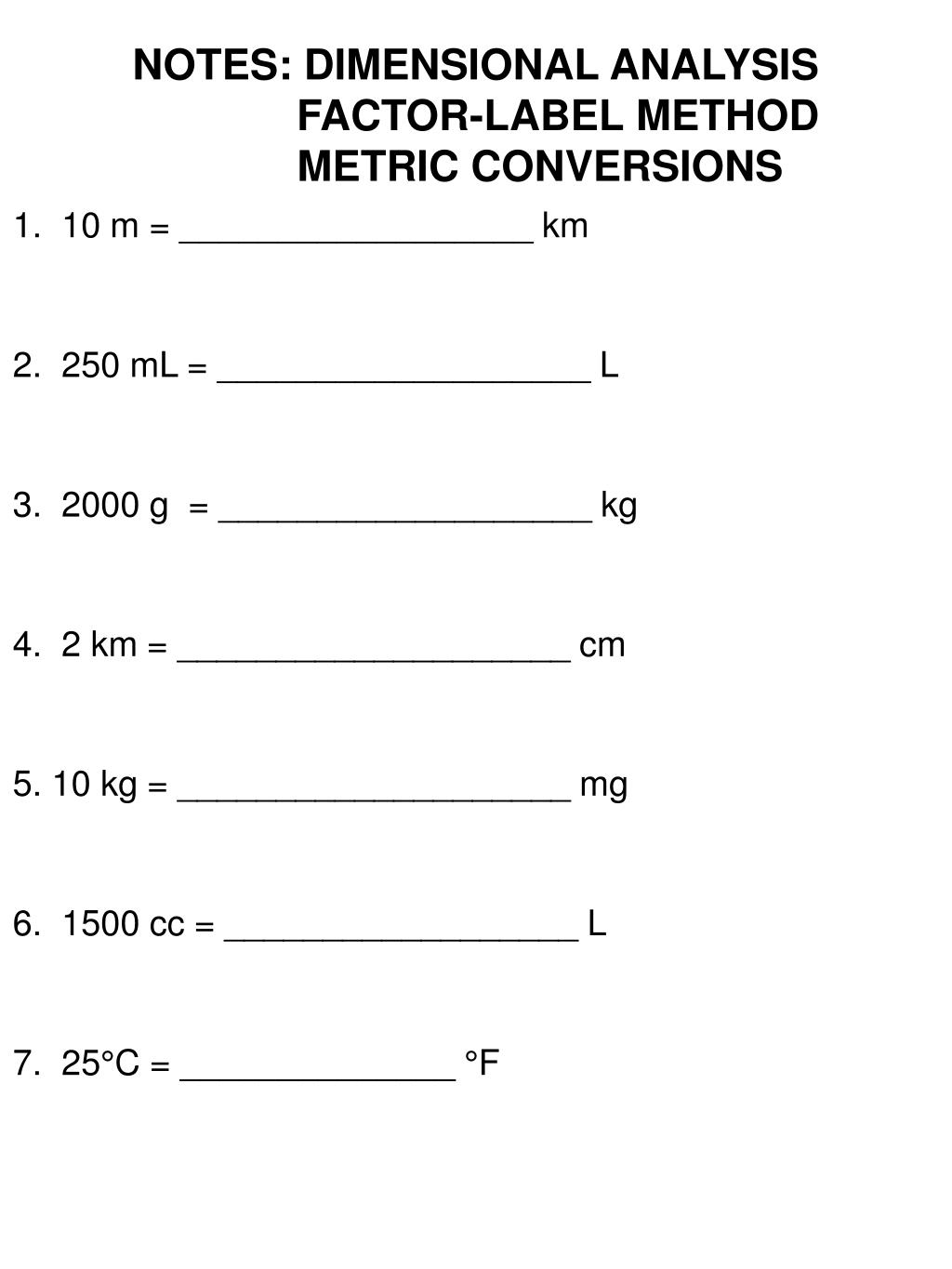
Factor label method
How to Convert Units Using Dimensional Analysis: 8 Steps Steps. 1. Study the problem. 2. Look at the problem closely. Find out what unit you need to convert to, and what unit you have to work with to find the desired unit. 3. State the known quantity that you'll need to convert from. Jot it down on your paper. What is the Definition of factor label method? - Answers The factor-label method is the sequential application of conversion factors expressed as fractions and arranged so that any dimensional unit appearing in both the numerator and denominator of any ... Dimensional analysis - Wikipedia The method involves the following steps: Gather all the independent variables that are likely to influence the dependent variable. If R is a variable that depends upon independent variables R1 , R2 , R3 , ..., Rn, then the functional equation can be written as R = F(R1, R2, R3, ..., Rn). Write the above equation in the form R = C R1a R2b R3c ...
Factor label method. Dose Calculation Dimensional Analysis Factor-Label Method In the Dimensional Analysis Approach or Factor-Label Method, as it is also known, clinicians use factors to multiply and divide to get the answer. This method of drug calculation can be employed with other methods of calculation to determine if an answer is logical or makes sense. Dose Calculation Ratio and Proportion Method - NCBI Bookshelf Three primary methods for calculation of medication dosages exist; Dimensional Analysis, Ratio Proportion, and Formula or Desired Over Have Method. We are going to explore the Ratio-Proportion Method, one of these three methods, in more detail. Ratio-Proportion Method allows us the ability to compare numbers, units of measurement, or values. 1.5: Mathematical Notation and the Factor-Label Method The factor-label method is used in numerical calculations, and in converting units. It can help us identify whether an equation is set up correctly (i.e. the resulting units should be as expected). Units are treated similarly to the associated numerical values, i.e., if a variable in an equation is supposed to be squared, then the associated dimensions are squared, etc. Factor Label Method (Unit Conversions) - YouTube Factor-label method and dimensional analysis commonly used in one-step and two-step unit conversions for chemistry, physics, math, and science. The factor-label method is commonly used in high...
Chemistry: Converting Between Moles, Molecules, and Grams - InfoPlease The method you'll use to solve this problem is the factor-label method. We'll see how to use the factor label method using the following example: Example: Convert 63 grams of ammonia to molecules. Solution: To answer this problem, do the following steps: Write down the number you're trying to convert. 63 g NH 3 Factor-Label Method — bozemanscience Factor-Label Method — bozemanscience Factor-Label Method Mr. Andersen shows you how to use the factor label method to solve complex conversions. Conversion of units - Wikipedia The factor-label method is the sequential application of conversion factors expressed as fractions and arranged so that any dimensional unit appearing in both the numerator and denominator of any of the fractions can be cancelled out until only the desired set of dimensional units is obtained. Math Skills - Dimensional Analysis - Texas A&M University Dimensional Analysis Dimensional Analysis (also called Factor-Label Method or the Unit Factor Method) is a problem-solving method that uses the fact that any number or expression can be multiplied by one without changing its value. It is a useful technique.
Drug Calculations: How To Use Dimensional Analysis Dimensional analysis (DA) or factor-label method uses a series of conversion factors of equivalency from one system of measurement to another but doesn't require memorizing specific formulas. This method reduces errors and can be used for all dosage calculations. To set up the equation, start with the label or unit of measure needed in the answer. Factor Label Method Flashcards | Quizlet The Factor-Label Method uses ____ to convert a unit to any other related unit. 1. Set up the problems so that all units except the one you want to convert to cancel out. 2. Cancel the units first. 3. Do the numerical calculations. 4. Round the final answer to the correct number of significant figures as determined by the measurements in the ... Factor Label Method Quiz | General Science Quiz - Quizizz If 1.00 yard is 0.914 meters. How many meters is 4 yards? If 1.000 kg is 2.205 pounds, how many pounds is 4.000 kg? 1.000 gallon is 3.785 Liters. How many Liters is 30.00 gallons? 1.0 gram is 0.035 ounces. How many ounces is 200.0 grams? If 1.0000 foot is 30.280 centimeters. How many cm is 130.00 feet? Basics: The Factor-Label Method - YouTube Factor-label (aka dimensional analysis) is a no-nonsense way to easily set these up every time. Ignore at your own peril. Matter: An Introduction Guillotined Chemistry 20K views 9 years ago Unit...
Factor-Label Method in Chemistry: Definition, Examples & Practice ... The factor-label method in chemistry is a method for converting units of measure from one kind into another using factors made from the equalities between the units. Learn more about the...
The Factor-Label Method methods to help, and finally settled on one method that seems to be most useful to students: the factor-label method (sometimes called the unit-conversion method, or dimensional analysis). The factor-label method tells us that units (such as pounds, miles, quarts, or millimeters) can be multiplied, divided, and cross-cancelled just like numbers.
Factor Label Method – The 4 Ultimate Guide to Better Math! The factor Label Method is a unique way of teaching effective and efficient math. The factor Label Method is based on the idea that math can be broken down into smaller, easier-to-understand pieces. This method teaches students how to do this, simply yet efficiently. One of the main benefits of the Method is that it is easy to learn and use.
The Factor-Label Method - mthagaman.com There are two main rules to solving science problems with the factor-label method: 1. Always carry along your units with any measurement you use. 2. You need to use the appropriate labeled ratios, fractions, or equalities. Example Problem: How many centimeters in 2 meters? You will see from a metric conversion chart that 1 meter = 100 cm.
Factor label calculator online - Mathenomicon.net Check out Algebrator. This is an excellent product that helps you get your assignment done faster and right. It can help out with assignments in factor label calculator online, algebra formulas and more. My parents could not afford my college fees, so I had to work in the evening, after my classes.
Factoring Calculator - Mathway Algebra Factoring Calculator Step 1: Enter the expression you want to factor in the editor. The Factoring Calculator transforms complex expressions into a product of simpler factors. It can factor expressions with polynomials involving any number of vaiables as well as more complex functions.
How do you convert km/h to m/s? | Socratic Jun 20, 2017 Use dimensional analysis (a.k.a. factor-label method). Explanation: Given: x km h Multiply by the conversion factor 1000 m 1 km: x km h × 1000 m 1 km Please observe how the km units cancel. Multiply by the conversion factor 1 h 3600 s x km h × 1000 m 1 km × 1 h 3600 s
1.3: Scientific Dimensional Analysis - Chemistry LibreTexts Use dimensional analysis to solve problems. Dimensional analysis (also called factor label method or unit analysis) is used to convert from one set of units to another. This method is used for both simple (feet to inches) and complex ( g/cm 3 to kg /gallon) conversions and uses relationships or conversion factors between different sets of units.
What is factor label method examples? - Short-Fact What is the factor label method? Dimensional Analysis (also called Factor-Label Method or the Unit Factor Method) is a problem-solving method that uses the fact that any number or expression can be multiplied by one without changing its value. It is a useful technique. What are the 4 steps of unit conversion? Step #1: Identify the units used.
The factor-label method: Is it all that great? | Journal of Chemical ... David P. Pursell, Neville Y. Forlemu, Leonard E. Anagho. Mathematics Competency for Beginning Chemistry Students Through Dimensional Analysis. Journal of Nursing Education 2017, 56 (1) , 22-26. DOI: 10.3928/01484834-20161219-05.
Dimensional analysis - Wikipedia The method involves the following steps: Gather all the independent variables that are likely to influence the dependent variable. If R is a variable that depends upon independent variables R1 , R2 , R3 , ..., Rn, then the functional equation can be written as R = F(R1, R2, R3, ..., Rn). Write the above equation in the form R = C R1a R2b R3c ...
What is the Definition of factor label method? - Answers The factor-label method is the sequential application of conversion factors expressed as fractions and arranged so that any dimensional unit appearing in both the numerator and denominator of any ...
How to Convert Units Using Dimensional Analysis: 8 Steps Steps. 1. Study the problem. 2. Look at the problem closely. Find out what unit you need to convert to, and what unit you have to work with to find the desired unit. 3. State the known quantity that you'll need to convert from. Jot it down on your paper.


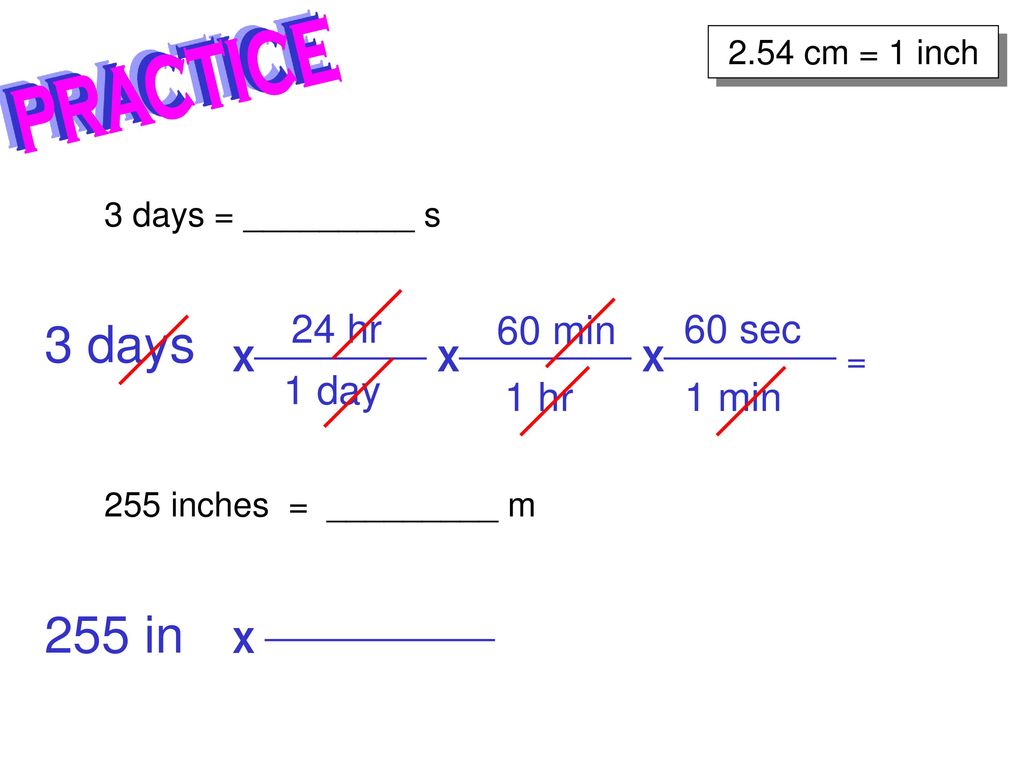
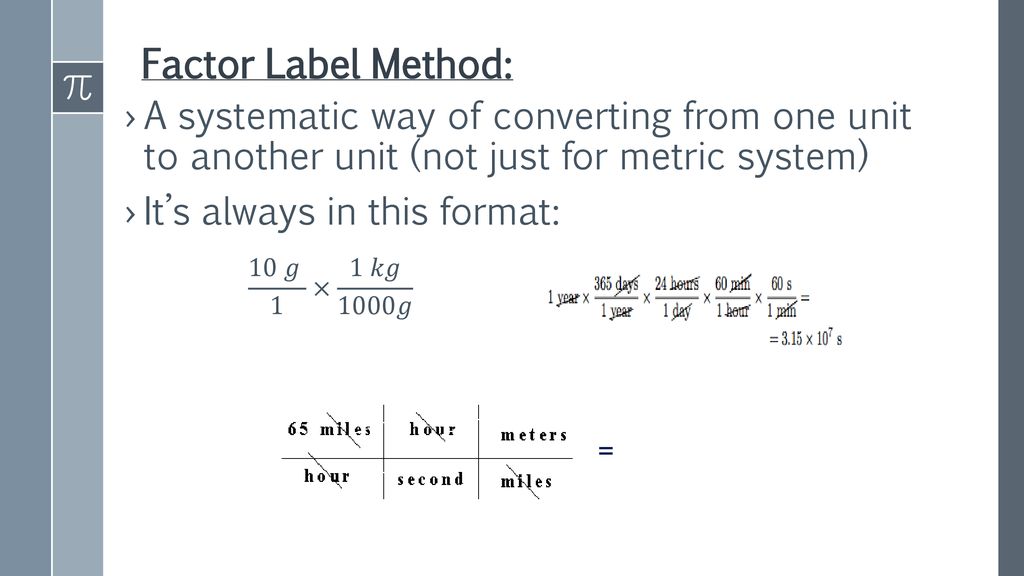

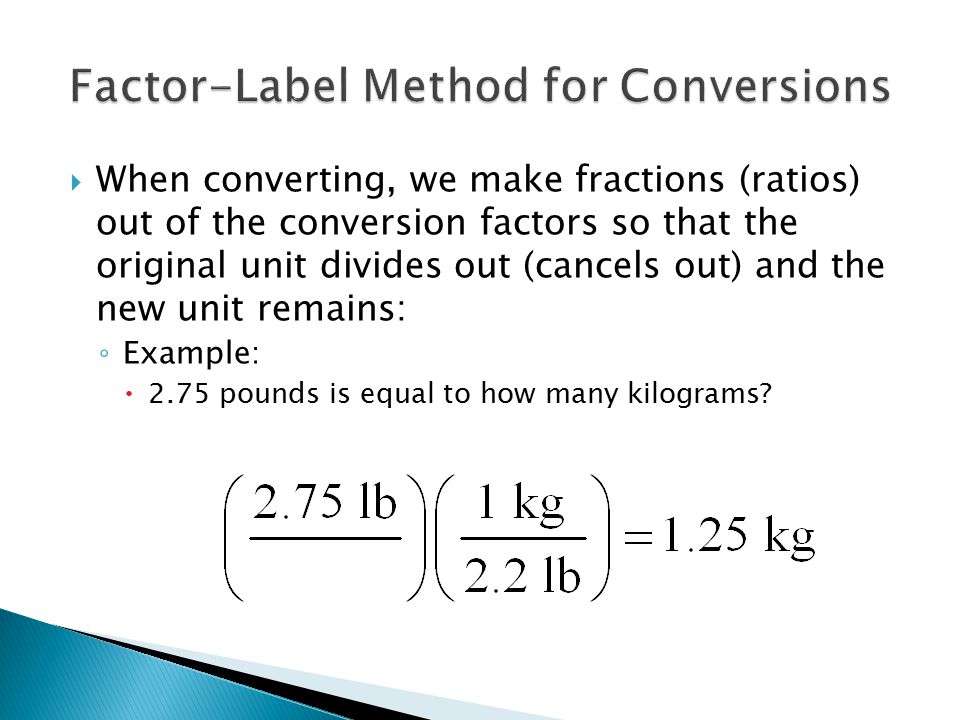


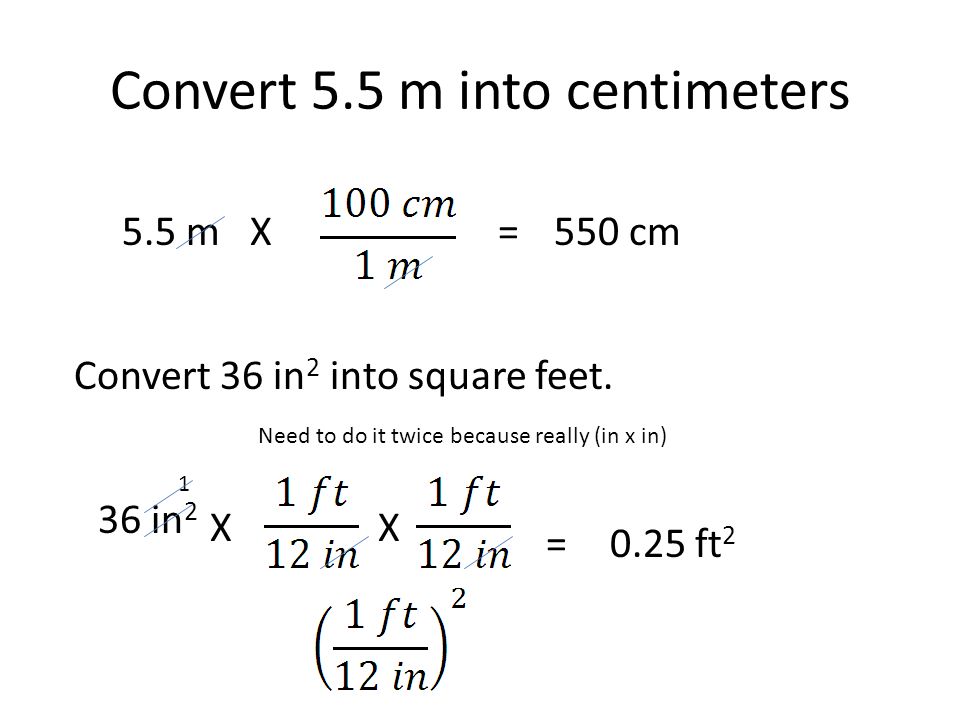

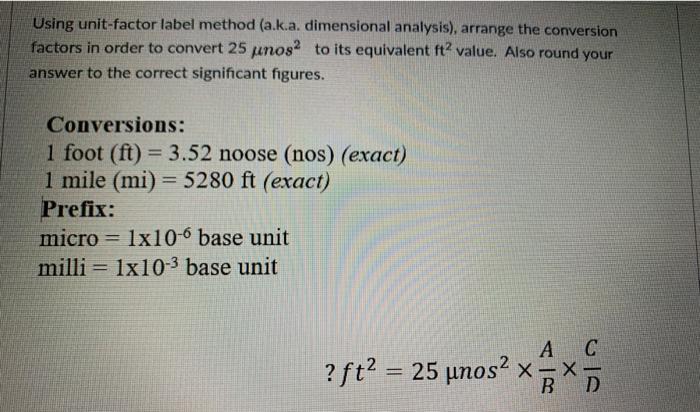

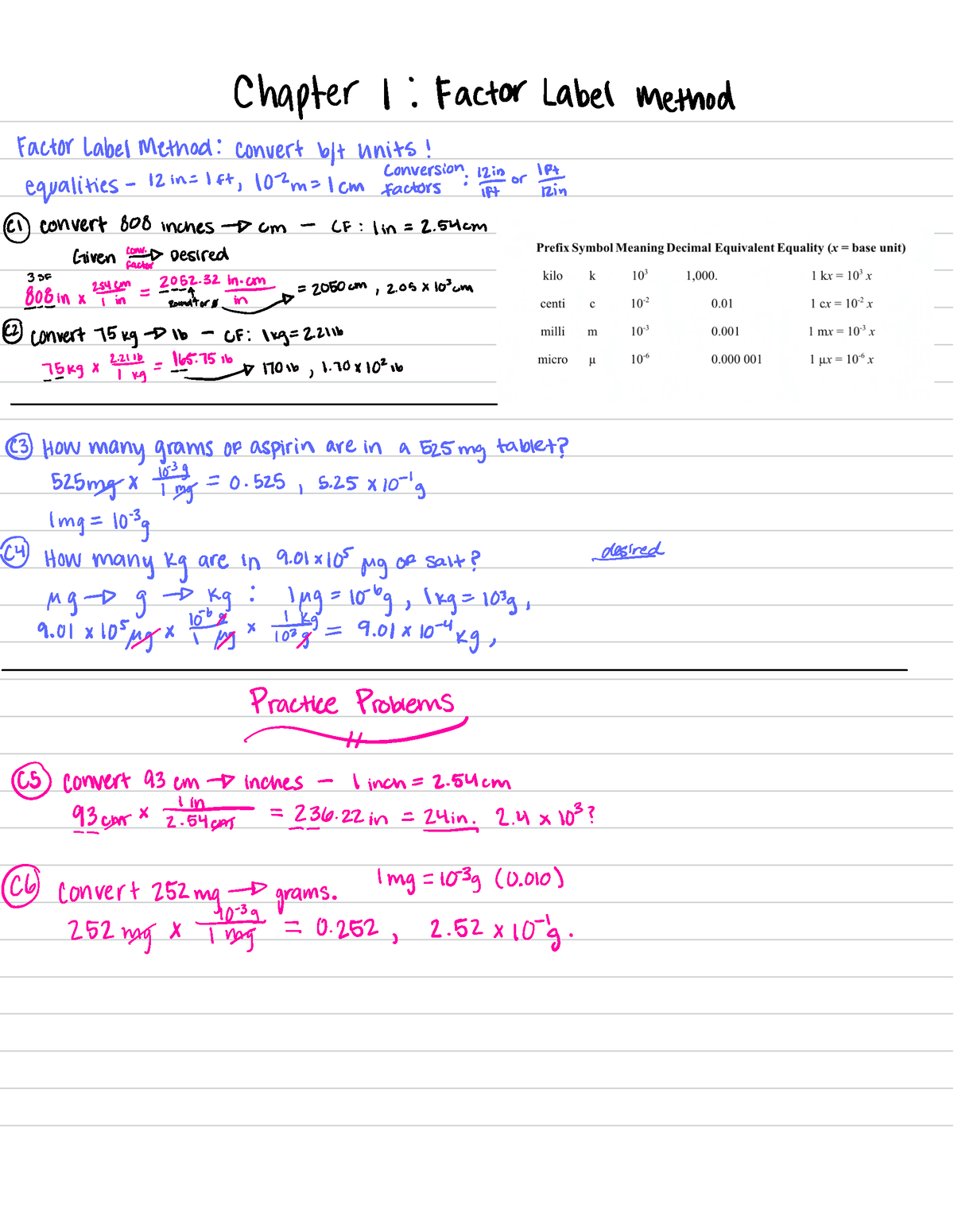


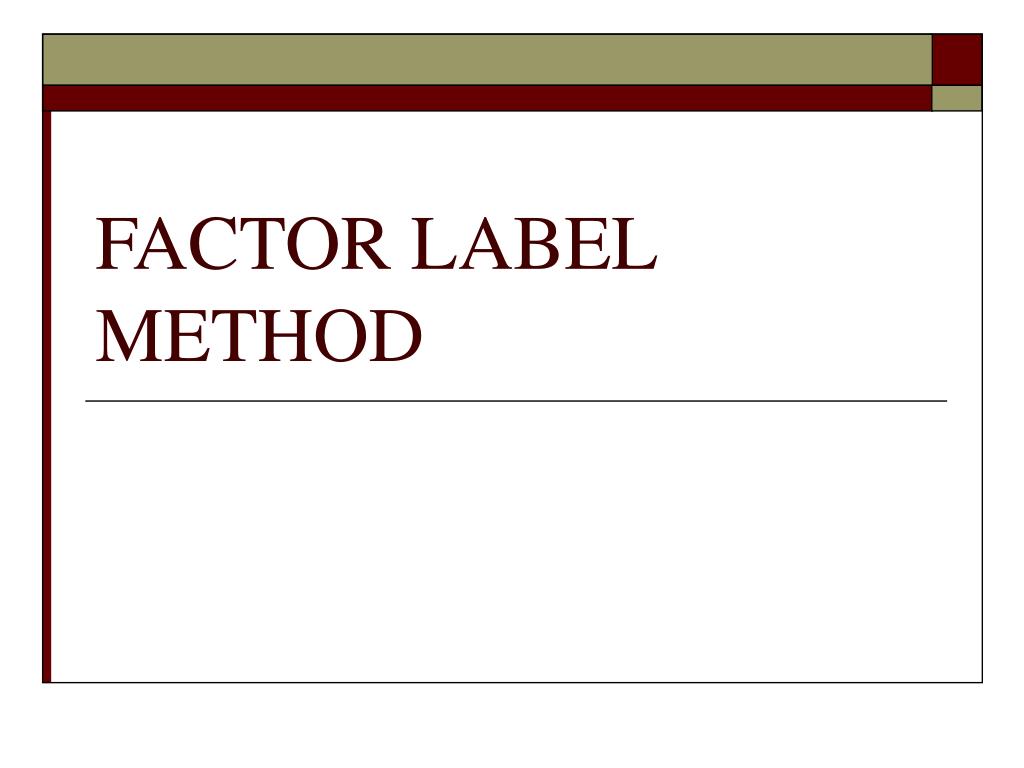
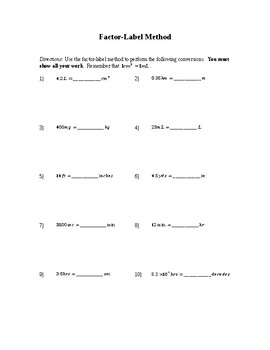
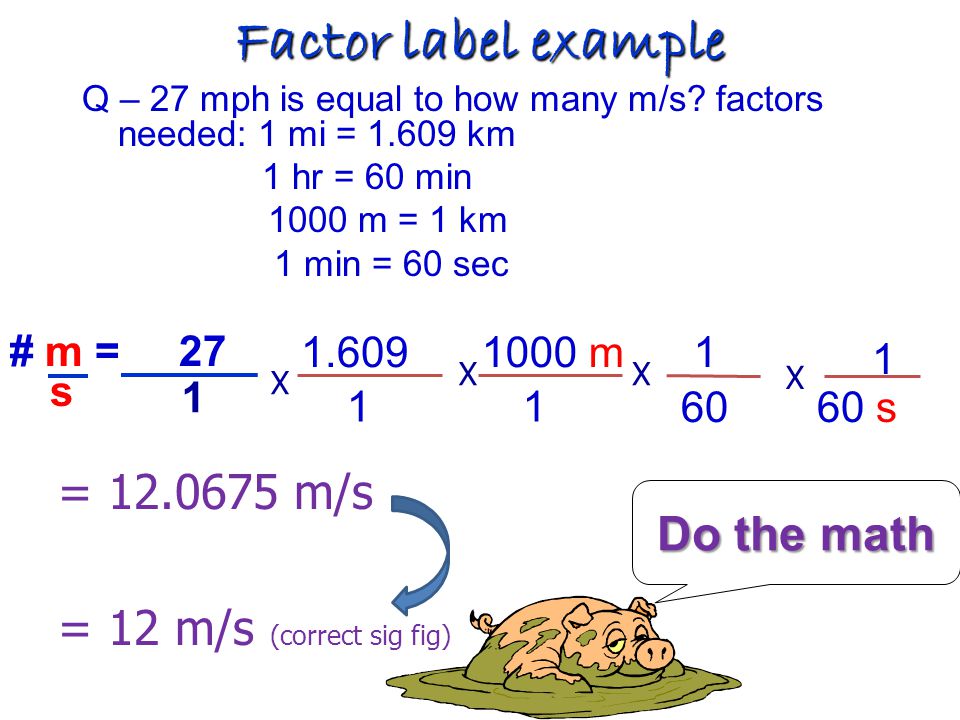

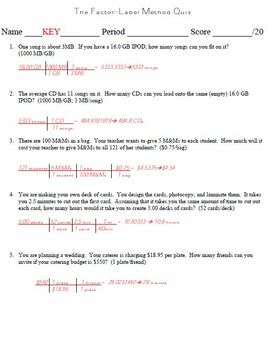

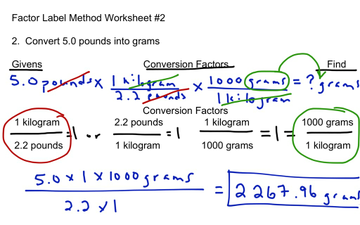

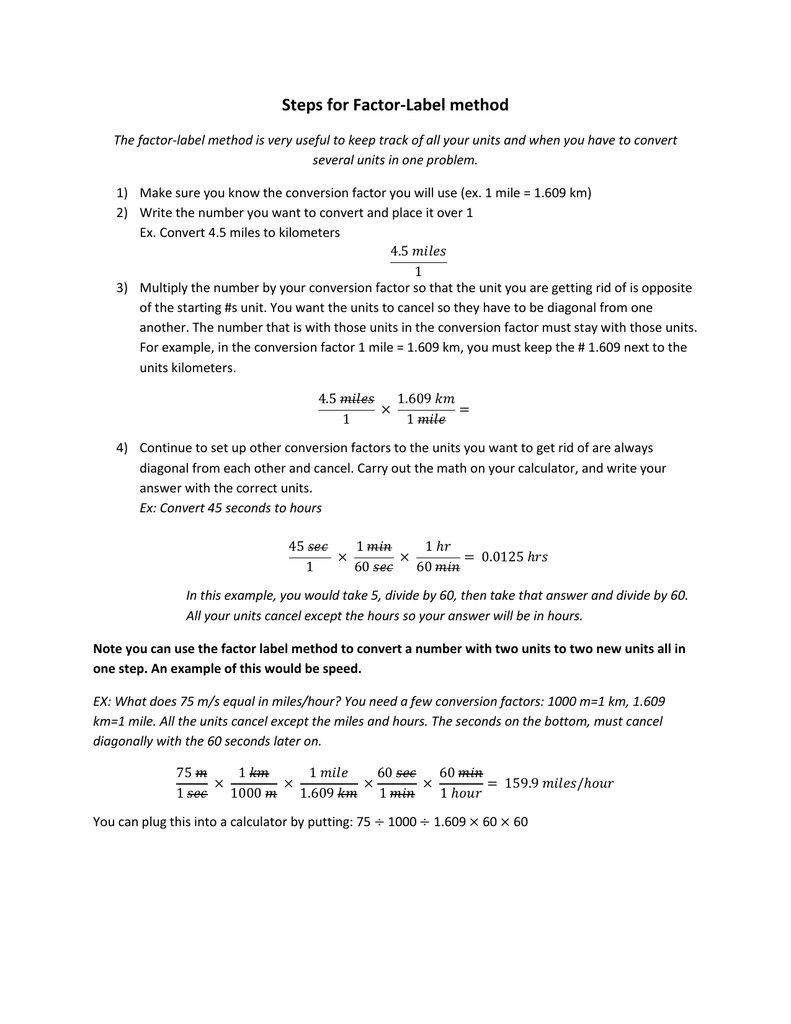

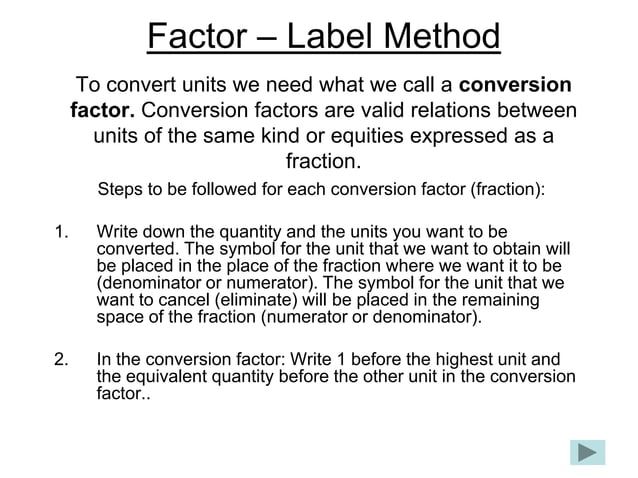
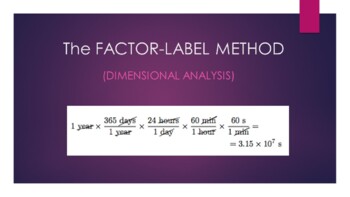
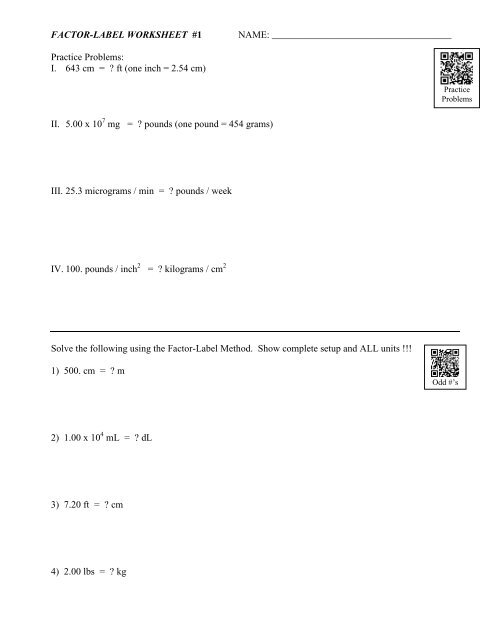

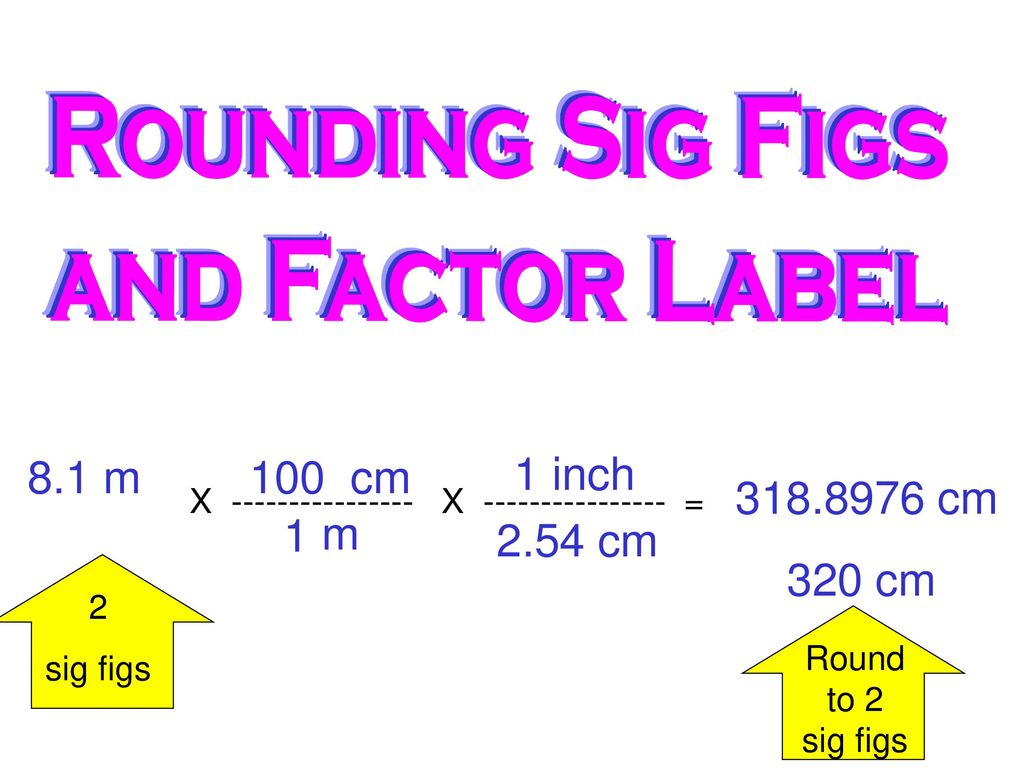
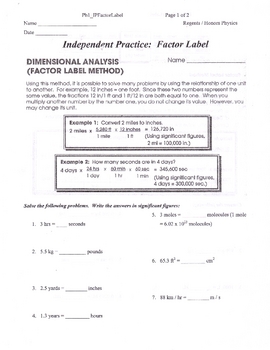


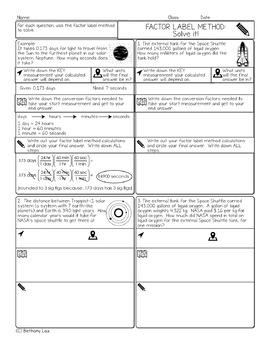




Post a Comment for "39 factor label method"